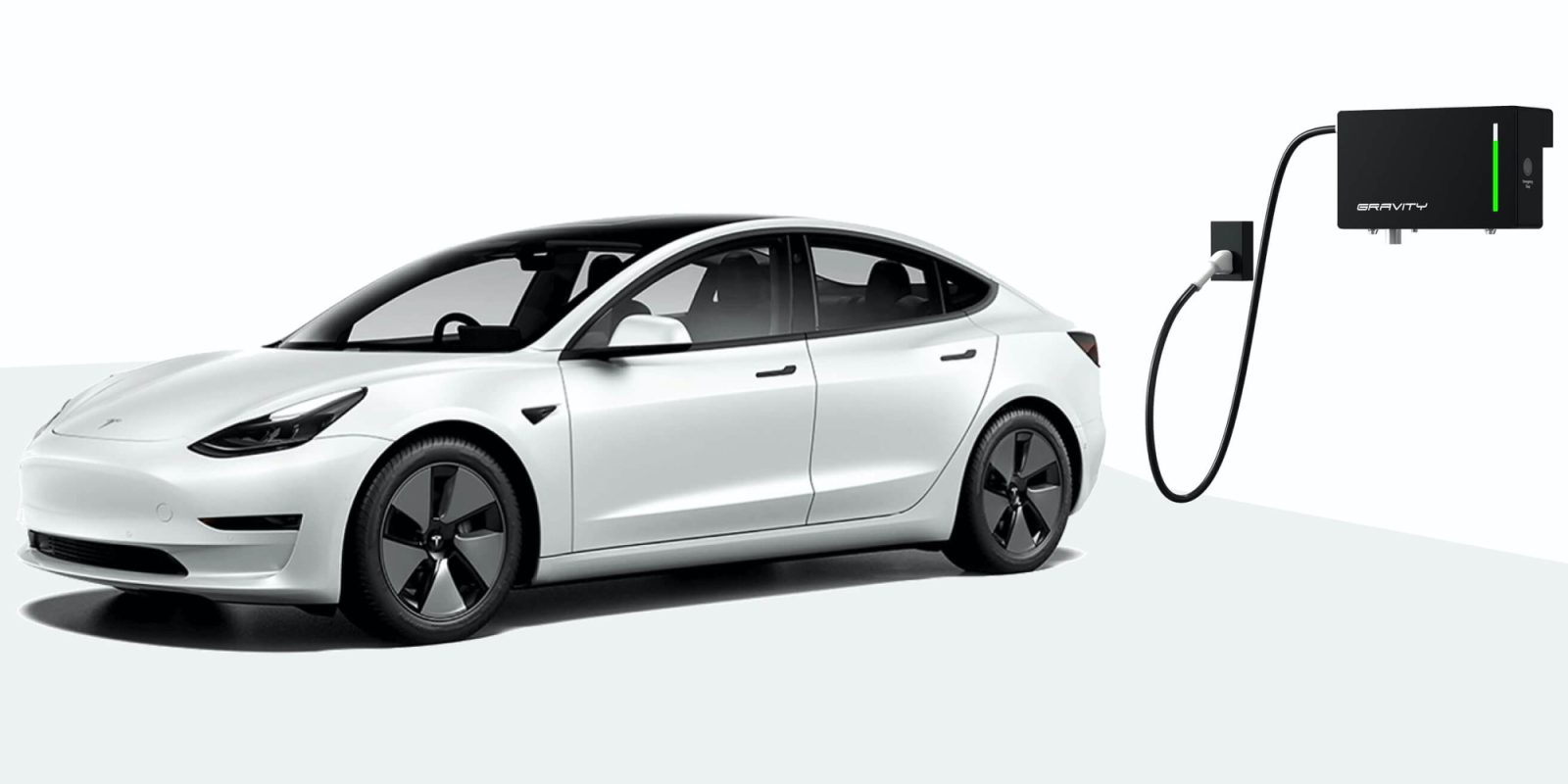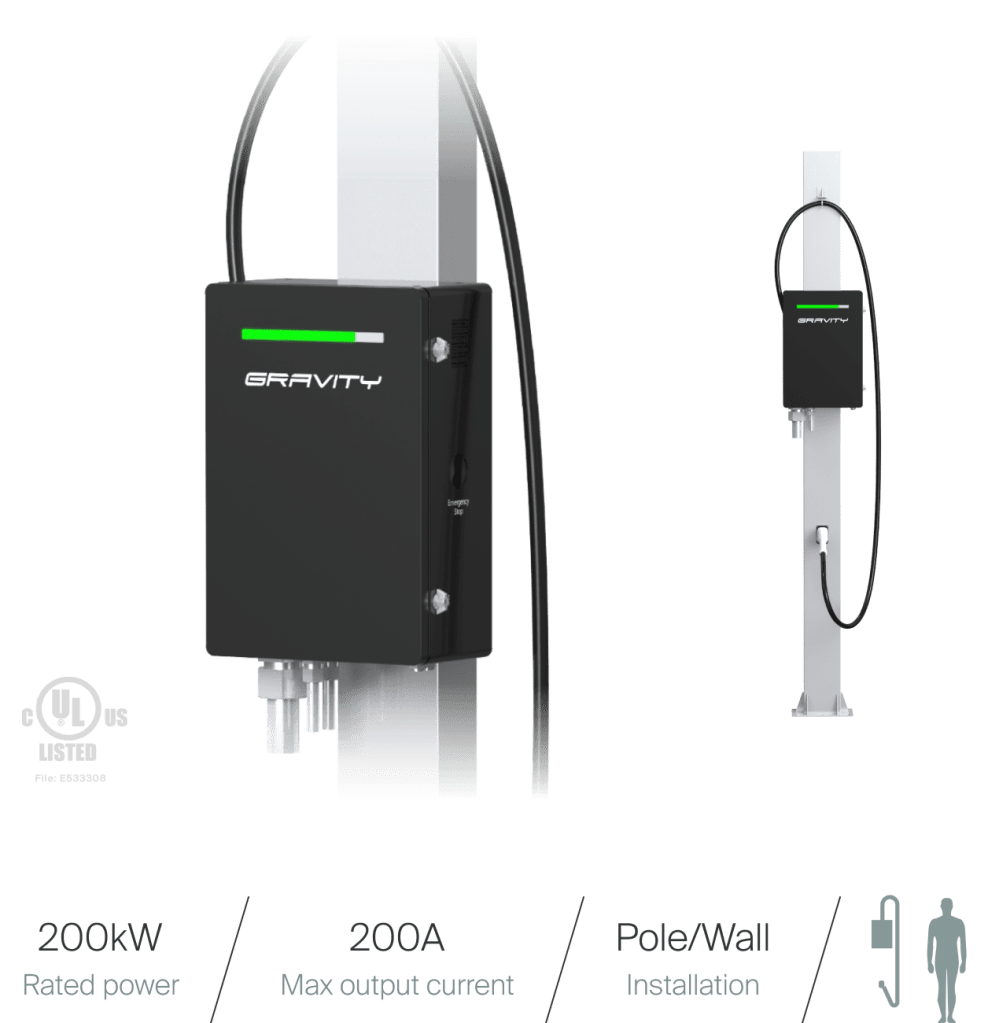This 500kW DC charger is the size of two home AC chargers


Gravity Inc., best known for its fleet of Mustang Mach E electric taxis in New York City, has announced a brand-new ultra-high output DC charger designed especially for the challenging ergonomics of urban parking garages.
The 500kW “DEAP” (Distributed Energy Access Point) is just 8″ thick and 18″ tall (curiously, width isn’t mentioned, but eyeballing, it looks to be about three feet across) — which sounds too good to be true. But as you may have guessed already, Gravity has achieved this by separating the charge endpoint from the power box that actually supplies the necessary energy to charge your car. The dimensions of that power box aren’t disclosed (read: it’s still gonna be pretty big), but this could be a significant advancement for charging in locations where space for EV infrastructure is very limited.
The innovation Gravity is introducing here is that the power box and charge endpoint can be separated by up to 500 feet of its proprietary liquid-cooled cabling. In a parking garage, that could allow for all of the necessary charge infrastructure to be colocated in an existing cooled equipment closet, or even outside the building. While that may not sound revolutionary, it could make high-speed DC charging feasible in locations where it was previously impossible, or at least highly impractical.
The 500kW peak output exceeds that of the input of any EV currently on sale in the US, but according to an interview with Gravity’s CEO conducted by The Verge, the company wants its solution to be future-proof. The Verge‘s reporting also shows an image of the chargers already actively installed and in use by Gravity’s EV taxi fleet in New York. (The chargers themselves are UL listed, which adds further credibility to Gravity’s product.)
Gravity will be offering more compact charge endpoints capable of up to 200kW of output, and those units look to be closer to the size of the level 2 home AC chargers most people currently use in their garages.

The company further claims that its system will support up to 250kW when charging Tesla vehicles using a CCS adapter (there’s no information on when or if Gravity will convert to NACS, but that seems like an eventuality). At a systems level, Gravity says it can scale the DEAP to over 20MW of capacity at a single location.
City Dwellers’s Take
We’re in the early stages of public charging technology, and downsizing will be a huge factor in the continued innovation in this space. While Gravity’s solution doesn’t sidestep physics by any means, it’s a clever way to dramatically reduce the footprint of high-speed DC fast chargers in environments where there may not be room for them. New York City parking garages are notoriously tight, and it makes sense that a company building a taxi fleet in the city would be very interested in how to scale up fast charging within the confines of existing parking infrastructure.
By no means is Gravity’s work going to enable home DC fast charging, but I can imagine a future where apartment buildings on a single block share common DC charging power box infrastructure and use underground cables routed into garages, something that Gravity’s solution could theoretically provide. Scaling that to a single-family residential development would be a lot more challenging with that 500-foot limitation.
As for the 500kW output, it certainly would be nice to have chargers that will age well into future EV innovation.
FTC: We use income earning auto affiliate links. More.